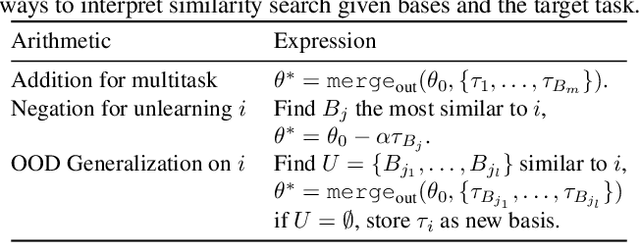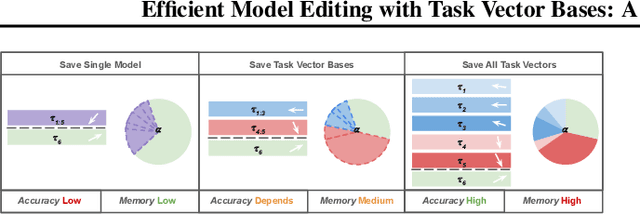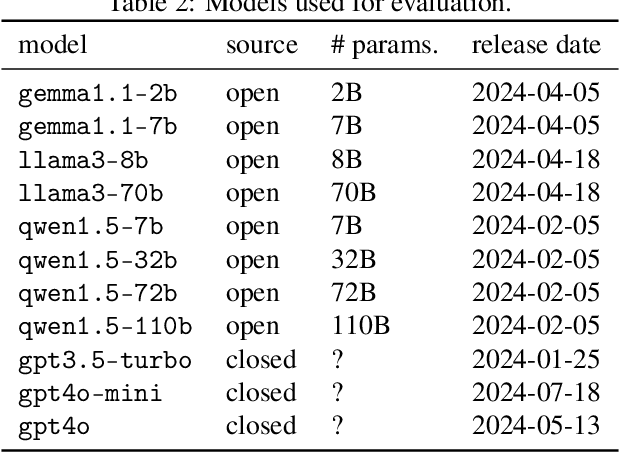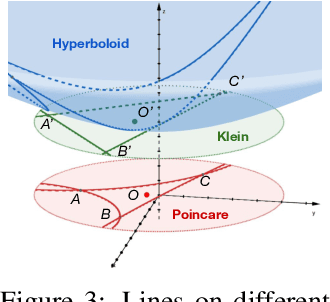Makoto Yamada
Tokyo Institute of Technology
When LRP Diverges from Leave-One-Out in Transformers
Oct 21, 2025Abstract:Leave-One-Out (LOO) provides an intuitive measure of feature importance but is computationally prohibitive. While Layer-Wise Relevance Propagation (LRP) offers a potentially efficient alternative, its axiomatic soundness in modern Transformers remains largely under-examined. In this work, we first show that the bilinear propagation rules used in recent advances of AttnLRP violate the implementation invariance axiom. We prove this analytically and confirm it empirically in linear attention layers. Second, we also revisit CP-LRP as a diagnostic baseline and find that bypassing relevance propagation through the softmax layer -- backpropagating relevance only through the value matrices -- significantly improves alignment with LOO, particularly in middle-to-late Transformer layers. Overall, our results suggest that (i) bilinear factorization sensitivity and (ii) softmax propagation error potentially jointly undermine LRP's ability to approximate LOO in Transformers.
Sparse minimum Redundancy Maximum Relevance for feature selection
Aug 26, 2025Abstract:We propose a feature screening method that integrates both feature-feature and feature-target relationships. Inactive features are identified via a penalized minimum Redundancy Maximum Relevance (mRMR) procedure, which is the continuous version of the classic mRMR penalized by a non-convex regularizer, and where the parameters estimated as zero coefficients represent the set of inactive features. We establish the conditions under which zero coefficients are correctly identified to guarantee accurate recovery of inactive features. We introduce a multi-stage procedure based on the knockoff filter enabling the penalized mRMR to discard inactive features while controlling the false discovery rate (FDR). Our method performs comparably to HSIC-LASSO but is more conservative in the number of selected features. It only requires setting an FDR threshold, rather than specifying the number of features to retain. The effectiveness of the method is illustrated through simulations and real-world datasets. The code to reproduce this work is available on the following GitHub: https://github.com/PeterJackNaylor/SmRMR.
PhiNet v2: A Mask-Free Brain-Inspired Vision Foundation Model from Video
May 16, 2025Abstract:Recent advances in self-supervised learning (SSL) have revolutionized computer vision through innovative architectures and learning objectives, yet they have not fully leveraged insights from biological visual processing systems. Recently, a brain-inspired SSL model named PhiNet was proposed; it is based on a ResNet backbone and operates on static image inputs with strong augmentation. In this paper, we introduce PhiNet v2, a novel Transformer-based architecture that processes temporal visual input (that is, sequences of images) without relying on strong augmentation. Our model leverages variational inference to learn robust visual representations from continuous input streams, similar to human visual processing. Through extensive experimentation, we demonstrate that PhiNet v2 achieves competitive performance compared to state-of-the-art vision foundation models, while maintaining the ability to learn from sequential input without strong data augmentation. This work represents a significant step toward more biologically plausible computer vision systems that process visual information in a manner more closely aligned with human cognitive processes.
Crane: Context-Guided Prompt Learning and Attention Refinement for Zero-Shot Anomaly Detections
Apr 15, 2025Abstract:Anomaly Detection (AD) involves identifying deviations from normal data distributions and is critical in fields such as medical diagnostics and industrial defect detection. Traditional AD methods typically require the availability of normal training samples; however, this assumption is not always feasible, as collecting such data can be impractical. Additionally, these methods often struggle to generalize across different domains. Recent advancements, such as AnomalyCLIP and AdaCLIP, utilize the zero-shot generalization capabilities of CLIP but still face a performance gap between image-level and pixel-level anomaly detection. To address this gap, we propose a novel approach that conditions the prompts of the text encoder based on image context extracted from the vision encoder. Also, to capture fine-grained variations more effectively, we have modified the CLIP vision encoder and altered the extraction of dense features. These changes ensure that the features retain richer spatial and structural information for both normal and anomalous prompts. Our method achieves state-of-the-art performance, improving performance by 2% to 29% across different metrics on 14 datasets. This demonstrates its effectiveness in both image-level and pixel-level anomaly detection.
Many-to-Many Matching via Sparsity Controlled Optimal Transport
Mar 31, 2025



Abstract:Many-to-many matching seeks to match multiple points in one set and multiple points in another set, which is a basis for a wide range of data mining problems. It can be naturally recast in the framework of Optimal Transport (OT). However, existing OT methods either lack the ability to accomplish many-to-many matching or necessitate careful tuning of a regularization parameter to achieve satisfactory results. This paper proposes a novel many-to-many matching method to explicitly encode many-to-many constraints while preventing the degeneration into one-to-one matching. The proposed method consists of the following two components. The first component is the matching budget constraints on each row and column of a transport plan, which specify how many points can be matched to a point at most. The second component is the deformed $q$-entropy regularization, which encourages a point to meet the matching budget maximally. While the deformed $q$-entropy was initially proposed to sparsify a transport plan, we employ it to avoid the degeneration into one-to-one matching. We optimize the objective via a penalty algorithm, which is efficient and theoretically guaranteed to converge. Experimental results on various tasks demonstrate that the proposed method achieves good performance by gleaning meaningful many-to-many matchings.
Efficient Model Editing with Task Vector Bases: A Theoretical Framework and Scalable Approach
Feb 03, 2025



Abstract:Task vectors, which are derived from the difference between pre-trained and fine-tuned model weights, enable flexible task adaptation and model merging through arithmetic operations such as addition and negation. However, existing approaches often rely on heuristics with limited theoretical support, often leading to performance gaps comparing to direct task fine tuning. Meanwhile, although it is easy to manipulate saved task vectors with arithmetic for different purposes, such compositional flexibility demands high memory usage, especially when dealing with a huge number of tasks, limiting scalability. This work addresses these issues with a theoretically grounded framework that explains task vector arithmetic and introduces the task vector bases framework. Building upon existing task arithmetic literature, our method significantly reduces the memory cost for downstream arithmetic with little effort, while achieving competitive performance and maintaining compositional advantage, providing a practical solution for large-scale task arithmetic.
On Verbalized Confidence Scores for LLMs
Dec 19, 2024



Abstract:The rise of large language models (LLMs) and their tight integration into our daily life make it essential to dedicate efforts towards their trustworthiness. Uncertainty quantification for LLMs can establish more human trust into their responses, but also allows LLM agents to make more informed decisions based on each other's uncertainty. To estimate the uncertainty in a response, internal token logits, task-specific proxy models, or sampling of multiple responses are commonly used. This work focuses on asking the LLM itself to verbalize its uncertainty with a confidence score as part of its output tokens, which is a promising way for prompt- and model-agnostic uncertainty quantification with low overhead. Using an extensive benchmark, we assess the reliability of verbalized confidence scores with respect to different datasets, models, and prompt methods. Our results reveal that the reliability of these scores strongly depends on how the model is asked, but also that it is possible to extract well-calibrated confidence scores with certain prompt methods. We argue that verbalized confidence scores can become a simple but effective and versatile uncertainty quantification method in the future. Our code is available at https://github.com/danielyxyang/llm-verbalized-uq .
Learning Structured Representations with Hyperbolic Embeddings
Dec 02, 2024



Abstract:Most real-world datasets consist of a natural hierarchy between classes or an inherent label structure that is either already available or can be constructed cheaply. However, most existing representation learning methods ignore this hierarchy, treating labels as permutation invariant. Recent work [Zeng et al., 2022] proposes using this structured information explicitly, but the use of Euclidean distance may distort the underlying semantic context [Chen et al., 2013]. In this work, motivated by the advantage of hyperbolic spaces in modeling hierarchical relationships, we propose a novel approach HypStructure: a Hyperbolic Structured regularization approach to accurately embed the label hierarchy into the learned representations. HypStructure is a simple-yet-effective regularizer that consists of a hyperbolic tree-based representation loss along with a centering loss, and can be combined with any standard task loss to learn hierarchy-informed features. Extensive experiments on several large-scale vision benchmarks demonstrate the efficacy of HypStructure in reducing distortion and boosting generalization performance especially under low dimensional scenarios. For a better understanding of structured representation, we perform eigenvalue analysis that links the representation geometry to improved Out-of-Distribution (OOD) detection performance seen empirically. The code is available at \url{https://github.com/uiuctml/HypStructure}.
Fast unsupervised ground metric learning with tree-Wasserstein distance
Nov 11, 2024Abstract:The performance of unsupervised methods such as clustering depends on the choice of distance metric between features, or ground metric. Commonly, ground metrics are decided with heuristics or learned via supervised algorithms. However, since many datasets are unlabelled, unsupervised ground metric learning approaches have been introduced. One recent, promising option uses Wasserstein singular vectors (WSV), which emerge when computing optimal transport distances between features and samples simultaneously. While WSV is effective, it has complexity $\mathcal{O}(n^5)$, which is prohibitively expensive in some applications. In this work, we propose to augment the WSV method by embedding samples and features on trees, on which we compute the tree-Wasserstein distance (TWD). We demonstrate theoretically and empirically that the algorithm converges to a better approximation of the full WSV approach than the best known alternatives, and does so with $\mathcal{O}(n^3)$ complexity. In addition, we prove that the initial tree structure can be chosen flexibly, since tree geometry does not constrain the richness of the approximation up to the number of edge weights. This proof suggests a fast, recursive algorithm for computing the tree parameter basis set, which we find crucial to realising the efficiency gains at scale. Finally, we employ the tree-WSV algorithm to several single-cell RNA sequencing genomics datasets, demonstrating its scalability and utility for unsupervised cell-type clustering problems. These results poise unsupervised ground metric learning with TWD as a low-rank approximation of WSV with the potential for widespread low-compute application.
Towards the Effect of Examples on In-Context Learning: A Theoretical Case Study
Oct 12, 2024



Abstract:In-context learning (ICL) has emerged as a powerful capability for large language models (LLMs) to adapt to downstream tasks by leveraging a few (demonstration) examples. Despite its effectiveness, the mechanism behind ICL remains underexplored. To better understand how ICL integrates the examples with the knowledge learned by the LLM during pre-training (i.e., pre-training knowledge) and how the examples impact ICL, this paper conducts a theoretical study in binary classification tasks. In particular, we introduce a probabilistic model extending from the Gaussian mixture model to exactly quantify the impact of pre-training knowledge, label frequency, and label noise on the prediction accuracy. Based on our analysis, when the pre-training knowledge contradicts the knowledge in the examples, whether ICL prediction relies more on the pre-training knowledge or the examples depends on the number of examples. In addition, the label frequency and label noise of the examples both affect the accuracy of the ICL prediction, where the minor class has a lower accuracy, and how the label noise impacts the accuracy is determined by the specific noise level of the two classes. Extensive simulations are conducted to verify the correctness of the theoretical results, and real-data experiments also align with the theoretical insights. Our work reveals the role of pre-training knowledge and examples in ICL, offering a deeper understanding of LLMs' behaviors in classification tasks.
 Add to Chrome
Add to Chrome Add to Firefox
Add to Firefox Add to Edge
Add to Edge